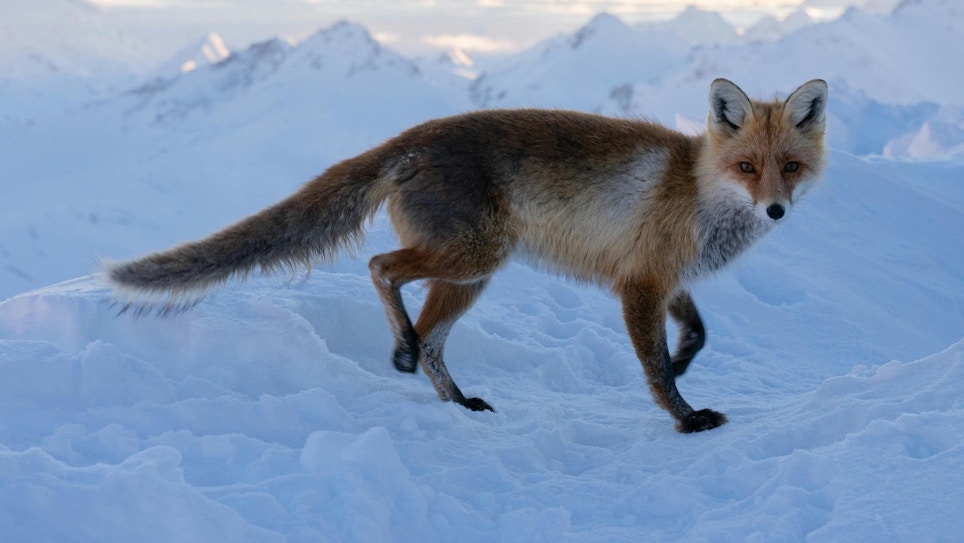The red fox was running all out — its bushy tail streaming behind — racing down the fence line. However, the bright yellow Piper PA-11 Cub two-seater roaring a few yards above the tops of the fence posts a hundred yards behind the fox, garnered a good portion of my attention. My thoughts were fluttering between what the fox was going to do and what my pilot was going to do, when the plane bounced almost straight up. The fox veered abruptly into the open field at 30 yards and I slammed it with a load of No. 2s. Damn! This new venture sure beat sitting at a desk in college — where I was supposed to be.
Several days earlier, at a Saturday night party, a guy I had never met approached me and asked if I was as good a predator hunter as he had heard. He was looking for a shotgunner for some aerial fox hunting. He’d tried four guys recommended by his college sweetheart, but none of them could hit a running fox from the back seat of his plane. Not being the shy type, I readily volunteered to demonstrate my shotgunning skills, and the following morning I was firmly jammed in the back seat of the cramped Cub in sub-zero temperatures wondering what the hell was wrong with my thinking.
At the time, South Dakota was THE pheasant capital of the world with an indescribable population and thousands and thousands of acres of unfarmed Conservation Reserve Program lands and equally large areas of lakes, ponds and sloughs — all prime pheasant habitat. Consequently, the red fox population had exploded to the point where Game & Fish had placed a $7.50 bounty on the small canines. Coyotes were prevalent west of the Missouri River, but for some quirk of nature hadn’t taken over east of the river at the time.
The morning after our initial meeting and sealing our new partnership with a couple extra beers, I met Dennis, my new crop spraying, piloting compadre, at his plane hangar and we discussed aerial shooting and fox hunting, a relatively new venture for both of us.
Dennis had tried to fly and shoot alone and almost crashed a couple times. We agreed I would shoot through the open door and window, leaning far enough forward for the shotgun barrel to clear the main strut and give me limited swing space.
Shortly after leaving Brookings that first morning, before we even had time for a practice run or two, we spotted the small red blob of a distant fox. The instant we dropped the door and locked up the window I knew I wasn’t wearing enough clothes for the sub-zero breeze whistling in. Dennis dropped the plane speed to just above stall, 40 mph or so, and lined up behind the fox, keeping a bit off to the left of the escape oriented canine. I overshot my first attempt but with the second go I had figured the reverse lead and sent the fox rolling.
After landing and loading the fox, Dennis took me on a “show me flight” to let me know what to expect! After flying at just feet above the ground with the metal skis chittering on the tops of cut corn stalks, barely clearing barbed wire fences, flying UNDER telephone and power lines, stomach churning upward and downward turns and even an upside down stint, all with the freezing wind howling into the rear seat, I ALMOST decided the classroom wasn’t such a bad idea after all! And then Dennis spotted a fox and I made a clean first shot. Our partnership of aerial fox hunting was on.
During one of the following days we jumped a fox that had obviously experienced a previous aerial pursuit because it got into a small grove of trees and Dennis’ buzzing and roaring over at treetop level wouldn’t budge it from the woods. We landed and I moved into the trees and spooked the fox out the far end. Dennis got on him ½-mile across the open field and put the fox back on the run to the woods, and I got an “in-your-face” taste of aerial predator hunting.
When I registered for the new quarter a few days after my first aerial gunning experience, I signed up for a bunch of classes I didn’t want. That gave me two weeks to drop and add courses with no penalties. I spent the whole two weeks aerial hunting fox and then re-registered for the courses I needed and attended classes only when absolutely necessary.
During one day’s hunt we took 15 foxes and a coyote — nine of the foxes from a single three or four section chunk of CRP where our biggest problem was avoiding flying pheasants that were rocketing out of every disturbed weed patch in the area.
Over the course of the winter we shot just shy of 200 red foxes and six coyotes, covering much of the East River area of South Dakota in our forays. The foxes brought a $7.50 bounty each and a whopping $2 per pelt. I often thought of this when I was paying up to $70 for a prime red fox pelt during the peak fur years.
Since those days, legal aerial gunning for predators by non-government personnel has been an on and off proposition in most states including South Dakota, and with the increase in coyotes, the red fox population has declined drastically. Ahhh, how I wish for the good old days!






